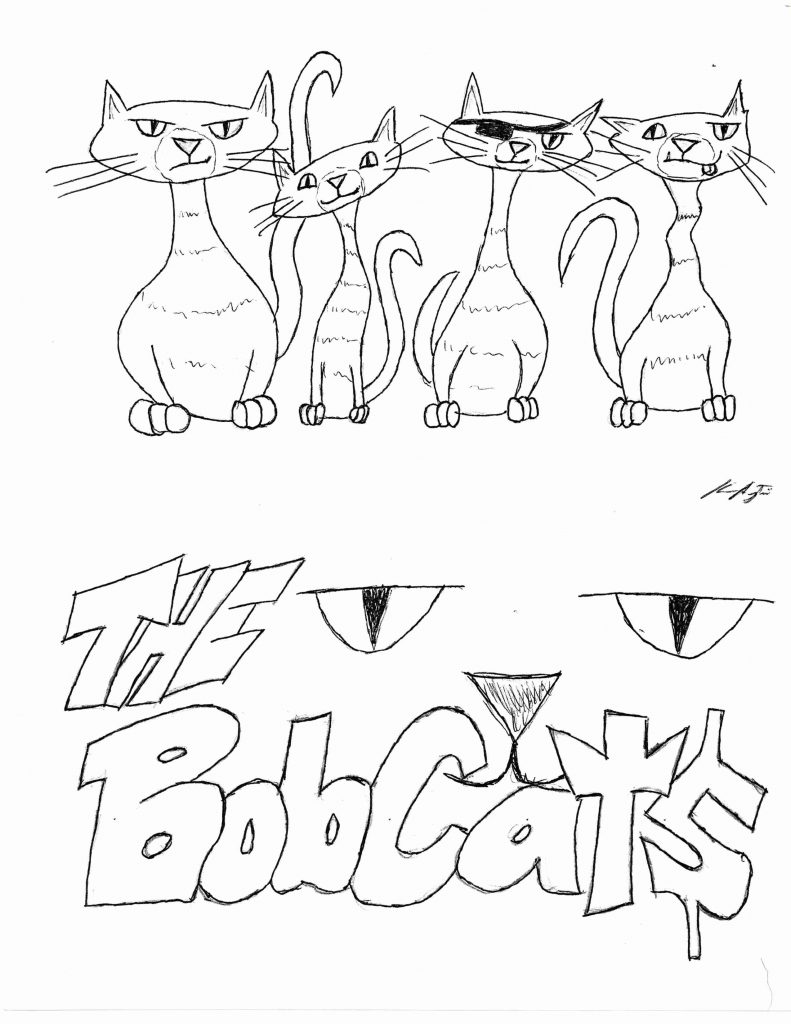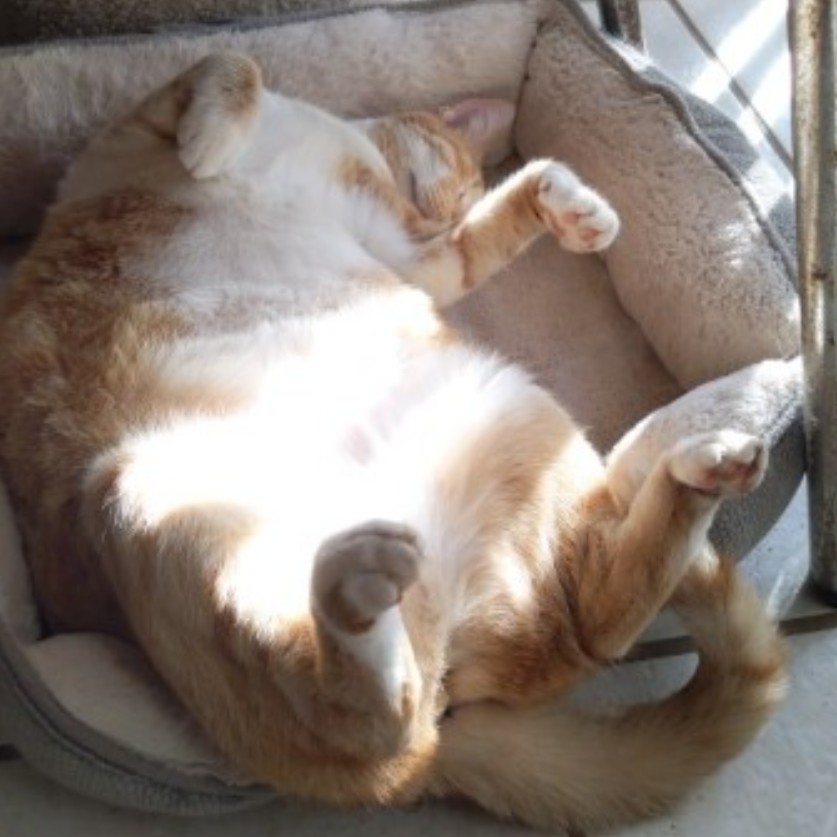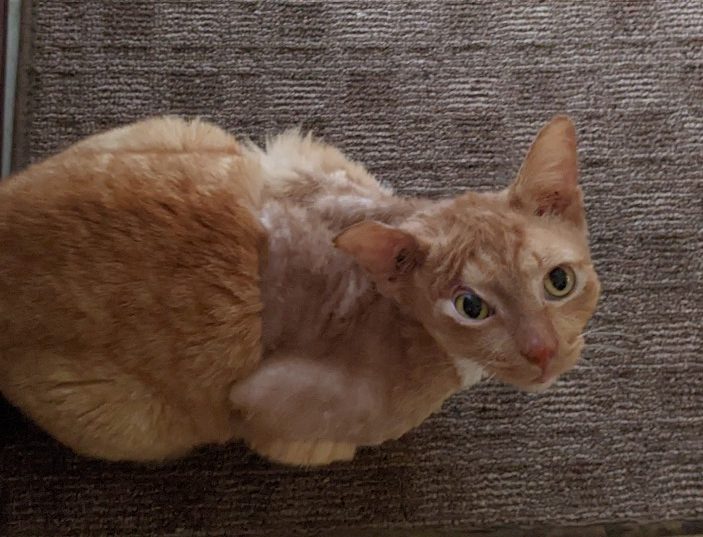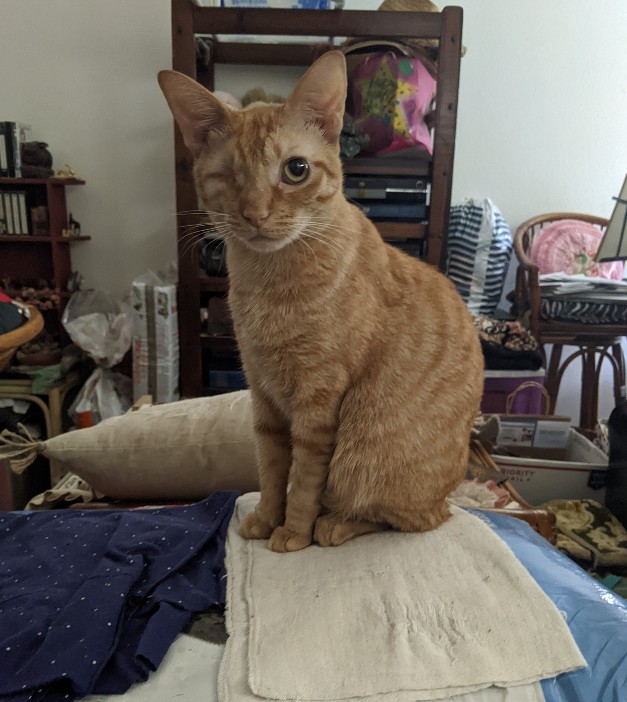Our Charity Work

Artwork © 2023 All Rights Reserved by Augustine
Our charity work which “the community”, the courts, and the investigators all love to ignore, is listed below. Charity work proves “vested in the community.”
“Vested in the Community”
Acceptable evidence is a Homestead Exemption:
9th Circuit Court of Appeals
McCune v. Essig (1903)
“Vested in the Community”
United States Bankruptcy Court for the Central District of California
Burden of Proof for being considered “vested in the community”:
Homestead Exemption (almost continuous residency)
608 B.R. 714 (2019)
We have lived in Hawai’i for going on twenty-five years and are also “Vested in the Community” by our charitable contributions includes working for years with the Ewa Beach “Meals on Wheels” program and S.T.E.M. robotics. The following are on file with the U.S. Attorneys’ Office in Honolulu:
Hawaii Cat Friends
Hawai’i SPCA
Hawaii Humane Society
Wai’anae Hawai’i SPCA
Alley Cat Allies
Alley Cat Rescue, Inc.
ASPCA
Best Friends Animal Society
Born Free U.S.A.
Cat Depot
Four Corners Equine Rescue
Hooves and Paws Animal Rescue
Humane Society International
Humane Society of the U.S.
International Fund for Animal Welfare
Keepers of the Wild Nature Park
Mercy for Animals
National Humane Education Society
Red Rover
SPCA International
The Humane League
Some rescue stories:
“Cream”: A Cat Story
She showed up one day on the front porch about as thin as a cat could be and still be alive, my wife said. Unlike the other community cats who frolicked out-of-doors day and night, Cream took it upon herself to be an inside cat. “Commander Swishy Tail”–her stable name, bestowed by me and never once uttered by my wife–was a tabby marked with regular and balanced proportions of orange and cream stripes, accented by a bit of white underbelly. Her color was similar to that of other ginger tabby strays in the neighborhood.
Sad, bedraggled, and emaciated, she was led into the kitchen–her new home–given a bed for sleeping, cat furniture for hiding in, ample food for feasting on, and a security door to keep her separated from prey animals we’d occasionally found discarded along the roads. We’d hosted a cat years prior–Avocado, who would eat anything except avocados–but she had moved along as quickly as she’d arrived. This one stayed, acclimated to the kitchen well, spent most of the day curled inside her bed beneath the sole table, and watched birds outside through the sliding glass door. She had a litterbox, but she preferred to venture outside into the backyard–where she did her duty and unsuccessfully chased birds–except during rain.
She ate well–too much, according to the veterinarian–as she gained a very visible paunch. We were chastised with a firm, “She needs to exercise.” A feather on a stick, flippy mechanical fish, and a whack-a-mole were all sensational flops. A cheap red laser pointer would rouse a response for at least a minute and a half. After that she would lie down and roll her eyes: “I’m done here.” We found that throwing a bit of food at her as a reward would extend the laser sessions, but not enough to amount to anything. The vet then suggested rationing her dry food with a spherical food dispenser rather than using a cat dish. Reminiscent of a tiny hamster exercise ball, this consisted of two hemispheres with holes, fastened together. When the pieces were rotated in opposing directions, the holes could be resized to yield the requisite amount of food a cat could access by batting the ball around. Cream hated it. After a couple of days, she hid it. Small kitchen, dear; it was easily found. She yowled in protest when it was recovered. Poor thing! She must have made a considerable effort to hide it. Once the feeder-ball was found, I rolled it along to get her interest. No joy; back to the laser mouse, I guess!
A distinctive feature of this cat was her tail–nearly as long, if not as long as the cat itself, and almost as thick at its base as the cat’s rump. When Cream wasn’t sleeping, eating, or watching birds, she’d sit and study us, quietly and patiently, except for her tail, which was incessantly in motion. Especially that last four inches of it: the final four seemed to have a mind of their own! The tail might stop moving, but the tip did not, hardly ever. When she slept Cream tucked the tip under her feet to hinder its mobility.
Once, Cream chased her tail like a puppy. She bit it. “Oh, poor tail! Someone has bitten you!” she seemed to think as she nursed the self-inflicted injury. Another time, as she was walking, Cream turned completely around rather quickly. The tail didn’t follow, and poked her right in the eye, proving that “Commander Swishy Tail” was not in command of her swishy tail!
One afternoon I caught her toying with the food-dispensing ball; she had mastered rocking it in place rather than pushing it around to get food. The next week she had learned to widen the holes, dropping more pieces per motion. By the end of the month, she had conquered the ball by opening it entirely. Hmm . . . a most dangerous adversary: a puzzle-solving cat. Touche!
When the F.B.I. arrested us, they used the kitchen as a staging area and opened the back door. Cream streaked out of the opening and we never saw her again. Neighbors have been unable to confirm her whereabouts or welfare. She is micro-chipped, but no one would be there to take the “lost animal” call if she were found; my wife and I were both incarcerated, and our phones never returned. Nor were we ever allowed to return to our house.
Goodbye, Cream, Commander Swishy Tail! May life treat you kindly. You were indeed a good and clever companion while you were ours.

Love, Bob
© 2022 All Rights Reserved, Bob and Lyn are not spies
Shards of Civil Rights™
Rose
Conscious of its own delusions of self-significance, the sheet of paper betrayed my procrastination, evidenced by its continually revealing a glaringly stark-white, rectangular void before me. I had snatched a pen and threatened to smite the page with any type of mark conceivable to obliterate the smugness from its surface. Confident in my inability today to overcome an apathetic mental stupor, it mocked me by patiently waiting, for hours, knowing I would eventually back down. Resigned to my lack of any modicum of coherence, I relented, placed the pen down, and tucked the paper within a notebook, closing it together with its companions, dreamcatchers of thoughts—some worded, others waiting their turns to be fulfilled.
It was New Year’s evening, 2022. Locked into individual cells at 8 P.M., word had spread that the place might become noisy around midnight; inmates would be creating their own festivities by beating plastic chairs against the concrete walls. Interesting way to celebrate. With about eighty-some-odd men in a cell block called a pod, I was incarcerated in Federal Detention Center Honolulu. I glanced through my slender window—double-paned plexiglass, preventing even sound from entering or exiting—and could see reticent aerial fireworks in the distance.
Boom. Pop. Stream. Silently.
I had been able to see my wife during an attorney visit the week prior to Christmas. It was a nice respite from routine. She was also incarcerated within the same facility, court-ordered to allow us visitation, but only in the presence of our attorneys, and only to discuss defense. Our husband-and-wife relationship, sanctified in the eyes of the Supreme Court, gave us less visitation privileges than the worst of the worst criminal offenders. She was doing well. She had received a dictionary I had requested for her as a Christmas gift and seemed more enthused than I thought she would be about a book—any book. No word from her since that visit. Happy New Year, Dear.
Before we were arrested some months prior—that, a much longer story—my wife and I rehabilitated forlorn animals. Not really rescuing or adopting, we thought, rather just helping them along. One of those was a small orange tabby cat my wife called Rose. I’m not certain why my wife called her Rose; she wasn’t rose-colored, but just an emaciated, orange-striped cat. I called her “Skitten” because she seemed to enjoy two flavors of “Special Kitten” cat food, which one grocer truncated to spell S-K-I-T-T-E-N on the receipts. And—with me—thaname stuck, rather than Rose.
Rose befriended acompanion, a gray-striped male tabby named Sparky. Sparky was a larger, firmer, more substantial cat. He followed Rose and she followed him, door-to-door, to mooch from any house that would feed them. We tried to feed them copiously, furnished them with an outdoor cat tree, flowing water, and elevated cat dishes to lure them away from who knows what other types of houses. Both Rose and Sparky had been spayed/ neutered, microchipped, and given the requisite inoculations. Sparky appeared healthy, but he had odd tendencies to drink an overabundance of water, frequently producing a darkish urine, and sometimes he drooled. A blood test revealed advancing kidney failure. The conjecture was he had accidentally consumed—or been purposely fed—automobile antifreeze sometime prior, and his kidneys were destined to fail. He was shifted to a prescription diet and special supplements.
On the other hand, Rose was a shy, mistrustful, easily startled, anorexic-looking creature. She would dart off at the slightest sound, even if the noise was 150 feet away from her. She would rarely stay still to eat, inexplicably fleeing after seemingly just starting a good meal. The only time she appeared relaxed during mealtimes was when Sparky was at her side. It was as if he was “watching her back”.
She disliked Sparky’s new kidney-support food, so we supplied her with her own favorites. Unfortunately, Sparky also liked her favorites. We had to cajole him to eat the medicated meals as best as we could. Perhaps the medicated food had a disagreeable taste.
After while—a period of months—Sparky slowed down, physically and mentally, and his eagerness to eat waned. His mouth developed sores making it difficult for him to enjoy nutrition. The drooling became more persistent, and a final visit to the vet determined he was not expelling any of his waste products. Within days he passed.
Rose overtly missed him. She wandered the street, looking here and there, determined to find her friend, but receiving no satisfaction. She was never one to be an indoor cat. Numerous efforts to lure her indoors resulted in her freaking out once the door closed. Even during high winds and rain, Rose would never accept the solace of the indoors. She came to the door, once, soon after Sparky’s passing, and allowed herself a few steps inside. She stopped and smelled the air, then returned outdoors. Our reasoning was she had seen him enter our house, but never saw him leave. Logically, she thought, he should still be inside, but no evidence—no smell of him—was there. We would never be able to convey to her that he was gone.
Afterward, she had an odd habit of sitting in the middle of the street as if to look in all directions unobstructed. Looking for Sparky? We could never tell. When I could catch her doing this, I would coax her to the sidewalk, wait until she seemed at ease with me sitting next to her, and pour a little dry food drenched with her favorite gravy. I attempted to impersonate Sparky by “watching her back”.
These sessions were sometimes successful, sometimes not. With such close observation, it dawned on me that Rose had a vision problem. Finger-snaps behind my back evoked a response, but her peripheral vision was non-existent. A bird once landed three feet away from her and she never reacted. Was she using hearing to identify her human friends? Smell for feline acquaintances? That might explain why she was taken aback by any sudden sound.
My wife and I were arrested on July 22, 2022, our cats (and other pets) scattered by the F.B.I. It took months before we could consistently communicate with the outside world. We were told a lot of stories at the time: Our cats were okay; cats were taken by the Humane Society; cats were all adopted; cats were being cared for by a little girl; cats were taken in by a lady across the street; and, again, the cats were all okay. Nothing could be confirmed: Which cats? What lady? What little girl?
However, we were able to confirm one story: A couple down the street had collected a cat which had been hit by a car. It was taken to a vet, but deceased enroute. They confirmed, by description, it was Rose. Poor cat. Did you sit in the middle of the road once too often? Were you looking for Sparky?
I sit at a stark table a few minutes before midnight on New Year’s Eve, 2022: a rare day without my wife; my best friend, I recollect, oft feigning as a paramour. Words taunt me:
Rose, Rosie, my Roseate . . . Skitten.
Our little trooper, for so long, is no more. Prevented from telling my wife the news, directly or indirectly, until a future time, by an institution largely oblivious to the sanctity of marriage. I weep inside as I choose an expressionless sheet of paper, place it on the table, and pick up a pen. Not today, my love, will you read this . . . but someday.
I fill the page in front of me with my very soul.

© 2023 All Rights Reserved, Bob and Lyn are not spies
fRANKENcAT
(Part 1: Prologue)
Damned jagged jaws cinched around my head, shearing the flesh from the right side of my face. I screamed, but it did not matter. That was the first bite from the horrid beast. He released his grasp, but in an instant grabbed my shoulder with a
second attack and continued pulling loose the layer of tissue he had wrested from my face. His handiwork laid bare a long stretch of muscle exposed to the air. Snarls and growls emanated from my tormentor as he shook me side to side, as if telling me, “Time to die!” And it was; this was the final minute of my final hour of this final day . . .
“Yea, though I walk through the valley of the shadow of death . . .”
Then it happened: A human voice rang out, “Finish him!” The dog stopped, looked at his owner for approval, and loosened his grip . . . just for an instant. I was free! With a burst of energy, I ran to the wooden gate and in one bound scaled it, leaving the menace behind. Having run until I could run no more, I collapsed under a bush some distance from the instrument of my afflictions.
Darkness . . . pain . . .
When I woke, I could not see from my right eye. I felt uncertain whether there WAS an eye. My feet and tail appeared to be unharmed, but that flap of skin . . . the pain, unbearable! There was blood around me: my blood.
I was alive.
(Part 2: “Ginger Tom”)
Early one morning, between three and four o’clock, Lyn grabbed Bob and took him outside. She had been setting out the a.m. ration of cat food when she spotted what she assumed was the Skitten in the bottom of one of the outdoor cat trees, in very poor shape.
The Skitten (named after a truncated grocery receipt for “Special Kitten” cat food, which she loved) was a small, demure ginger tabby female who had, for a couple of years, been befriended by a larger, gray male tabby named Sparky. He seemed to look after her, especially when she ate. It had been determined that she had a vision problem, and would only eat well if he was there, “watching her back”. Sparky had succumbed to kidney failure some months prior to this morning. (A prescription diet had done all it could for him. The veterinarian suspected Sparky had been poisoned by antifreeze sometime early in his life, and his kidneys never recovered.)
Bob and Lyn mulled over the dilemma of the injured Skitten: It appeared ribbons of flesh from her face and part of her shoulder had been torn off, and were hanging from her body. What to do? There was an emergency vet clinic across the island which was open 24 hours, but the damage was severe. Skitten had always been nervous and easily frightened, so much so that she was often loath to let anyone or anything (except for her friend Sparky, or as a second choice Lyn and Bob) get near her. At this moment, however, behind Bob and Lyn walked up the Skitten, to see what was going on!
Almost simultaneously her caretakers both asked each other, “If that is the Skitten, what cat is in the tree?” It was a nearly identical-looking ginger tabby (later found to be a male). He was ambulatory, but in bad shape, and he reeked of rotting flesh. The decision was made: A carrier was brought out, and the strange cat eased into it from behind; he grudgingly went in. On her way to the car, Bob gently told Lyn not to get too attached; there was a good possibility that this cat would not make it. Off she went, hopeful anyway.
Around nine-thirty in the morning, Lyn called Bob with news. She said the vets believed they could save the cat. “You’re kidding,” responded Bob, but Lyn added that this would be costly, probably approaching ten thousand dollars. Money was tight, but the bills were always paid. After agreeing to break into their retirement savings, Bob and Lyn set this new cat up for veterinary care.
Tom (as he was named) was treated by three of the best veterinary surgeons on the island of Oahu. Preliminarily, he was neutered and microchipped. The torn skin (conjecturally the result of a dog mauling) was carefully relieved of dead meat and live maggots, then carefully reattached to his head and shoulder areas. His face was the most difficult to repair; stretched skin was drawn taut around his right eye and the right side of his mouth. Fortunately, both his eyes turned out to be in good shape! After a month of surgeries and therapy, the injured cat was ready to come home. Two security screen doors were purchased and installed to prevent the possibility of his leaving the living room–his new home–while allowing him to see and smell the other parts of the house.
It was difficult for Tom to eat wet food, and he preferred dry chow. He always had trouble picking up and shoveling down his food. He’d carefully dip his paw into his water dish to gauge the depth before he’d do his best to drink. He had also sustained some type of neurological damage that was only beginning to resolve.
Final veterinary costs were nine thousand dollars, payable in cash and not tax deductible. It was worth the money; Tom was one of the nicest cats we’ve ever seen.
Where is he now? Uncertain. The F.B.I. is not in the business of caring for cats, no matter the cost. He was last known to be in a neighbor’s care, but his current location is unverifiable.
This cat needs special care and special cat food. Bob and Lyn have been so far unsuccessful in discovering anything definite about his continuing health and condition, and that uncertainty is just a shame.
(Part 3: Lyn’s Turn)
When I took Tom to the clinic, the intake vet asked for ‘animal name’. I said ‘Ginger’, which was his color. I hadn’t noticed gender, & we DID have all these ginger FEMALES showing up all the time . . .
When advised the cat was a male, I added ‘Tom’. I always thought it sounded piratical (like ‘Calico Jack’ Rackham). ‘Arrr . . . The mate were Ginger Tom, as scurvy a seafarer as ever climbed a mainbrace . . .’
Tommy was the LOVIEST cat we’ve ever had . . . I’ll always remember him stretching up along my leg to be petted, then falling over backward into his water dish . . .

© 2023 All Rights Reserved, Bob and Lyn are not spies
Shards of Civil Rights™
Verloren
This cat—a most ordinary cat—has only one eye. Daily she eats, sleeps, and plays in a lovely residence on an island in the middle of the Pacific Ocean. Possessing the requisite number of feet, toes, ears, nose, mouth, and tail (albeit a short one), but only the one eye, she will stare back at you with the self-assurance of a puma, a perfect complement to the creature’s elegant panther stride. A confident glare reminds you she is in charge of this house. She looks at you as if to say, “I know something you don’t know,” as she makes circular patrols of her hallowed domain, comprising chairs, cushions, and tables. Verloren—named “Lost” by her human companions—has a life about as pleasant as any a ginger tabby could expect.
It wasn’t always so.
Several miles away and years ago, a variety store was built. This establishment was unlike any other (nearby, that is), as it sold almost everything its clientele would buy: food, clothing, books, candies, medicines, home and automobile supplies . . . almost anything! (The best-selling item was toilet paper, oddly enough, followed by bottled water and large bags of rice in close second and third positions.) There were other stores nearby—department stores, hardware stores, clothing stores—but none were as close to the railroad tracks as this one, and none as popular. The shopping was prolific.
A railway once traversed the perimeter of the island, possibly over a hundred miles. A storm, long ago, had demolished most of the track, leaving a small portion reserved for tourists and holiday rides.
No one is certain when the cats first appeared beside the railway near the variety store, but there they were, meandering, mooching, and seemingly lounging: not in the sense of leisure, but remaining sedentary while awaiting the next handout. The Cat People, as they were often referred to, would feed the bevy of felines before dawn and after sunset every day. Over the years, increasing from a handful to nearly fifty in count, cats would creep from amongst trees and bushes, some crossing the railway tracks to each consume his or her own ration of food: black, white, calico, tabby, grey, and spotted. Every color imaginable, for a cat!
An access road parallels the tracks which run along the edge of the parking lot of the variety store. At 5 a.m. the store opened its automobile fuel pumps (one of the many extra services provided). On this morning, many months from this writing, Bob rose early to fuel two of the family cars, using the access road beside the tracks. Passing by the store, quiet in its early morning desertion, on the right, he spotted a cat lying in a strange position on the left-hand side of the road. At the time, not really thinking much about it, he filled the car, and took a different route home. The sight nagged at the back of his mind. He roused Lyn, asked her to drive the second car, and requested they take the same route he had earlier. Sure enough, the cat was still there, and it had moved, somewhat. They hurried to fill the near-empty tank, after which Bob directed Lyn to go back to the cat, and drive by slowly. By the time they arrived, the cat had returned to its original position. They stopped. Bob instructed Lyn to stay in the car. He exited and approached the cat, an adolescent tabby. It was alive, but had apparently been struck by a vehicle. He walked back to Lyn and described the situation: The wounds were serious; the cat required veterinary care, and most likely would need to be euthanized. Lyn was up for the challenge; she and Bob had done this before! Bob picked the cat up and laid it gently in the back seat of the car. After dropping Bob at the house, Lyn was off to the animal hospital with the wounded creature.
Several hours later, Lyn called to solemnly inform her husband there was hope, but the cat’s face had received the brunt of the collision damage. The small female tabby would most likely lose an eye. Her head had almost been split in two, every bone in her face broken. The rest of her body seemed to have escaped injury. Expected course of treatment: eight to ten thousand dollars and at least two surgeries, the most strenuous of which would be to repair the roof of her mouth, which had been split open.
After about a month of veterinary care and medical boarding, Verloren finally came home. Shy, frightened, looking more like a weasel than a cat, she mainly hid under a table in the living room. Food and a litterbox (which she readily used) were placed nearby. She would rarely venture out, but sometimes poked her head between gaps in the cushions surrounding her lair, like a groundhog peering from its hole.
As she became acclimated to her new life, Verloren came out more often. She watched our other recuperating stray, Ginger Tom (dubbed by Bob “the Frankenstein cat”), and learned to play tricks on him—like dumping all his food on the floor, or using his litterbox (which he preferred to remain pristine, and reserved for himself alone). She was delighted when he cried and cried, upset by her uncouth behavior.
Verloren did end up having her badly injured eye removed; glaucoma rapidly set in, due to the sharp edges of her broken eye socket digging into the eyeball. She appeared none the worse off afterwards; the only disadvantage, overall, appeared when she would undertake play fighting/wrestling with her “Frankenstein” companion. Then Bob and Lyn would gently break them apart. Verloren had difficulty retracting her claws, and they were afraid of more eye injuries. Ginger Tom had a partially occluded right eye, so there were only 2½ or 3 eyes between two cats. No need to endanger any more!
Verloren turned out to be one of the nicest cats ever known. Was she grateful? Bob and Lyn thought so.
Veterinary costs? Approaching ten thousand dollars, for a most ordinary cat thrown into a extraordinary situation!
Bob and Lyn led a mostly happy and useful life, providing services to others in the neighborhood, helping animals in need, and largely keeping to themselves. Privately, however, they enjoyed travel, adventure, science fiction, James Bond, and wooden roller coasters. A problem arose when the couple’s fantasy life crossed over and parallelled the real world a bit too much, ultimately catching the eye of the U.S. government.
Bob and Lyn shared the same dream of excitement, while they held regular jobs, did housework/yardwork, decorated extensively at Halloween and Christmas, bought locally, properly paid their taxes, and such, but the Federal Bureau of Investigations thought that if their private lives in any way suggested a fascination with foreign intrigue . . . they must be spies. So they were arrested. A search of their residence quickly returned hard evidence of the government’s suspicions: dress-up photos involving parts of a Russian uniform (owned by a friend), and an invisible ink kit. This astounding revelation was released to the worldwide press: Russian spies right here in Kapolei! Bob and Lyn lost virtually all their family and friends due to serious adverse publicity and threatening knock-on-the-door interviews with the F.B.I.
Let’s dwell a minute on that invisible ink kit: It was so important for an early press release that it was photographed and then abandoned at the residence, never to be used as real evidence in a trial. It was a toy . . . from Toys ‘R Us. Fantasy crossed over into reality in a bad way!
Where is Verloren now? We remain uncertain. The F.B.I. is not in the business of taking care of cats, whatever their limitations, and regardless of the cost to rehabilitate them. Verloren, (because of her injuries) a strictly-indoor cat, was last reported going to a neighbor’s house.
Bob had no contact with the outside world for his first month of incarceration. Lyn never had real-time contact with others outside FDC, with the exception of person-to-person attorney visits. Neither has so far had any luck in verifying Verloren’s health, condition, and whereabouts.
This cat should eat dry food only; wet food will make its way into her sinuses through a small residual hole in the roof of her mouth. (A final surgery to deal with this was set for the Monday after Bob and Lyn were arrested, to be held without bail.) Neither she nor Ginger Tom was ever intended to be released to the outside world.
The story of one of the best cats we have ever known, an ordinary cat in extraordinary circumstances, may have come to an end due to some overly-eager agents looking for spies who were never there.
That, dear readers, is a tragedy and a shame.

© 2023 All Rights Reserved, Bob and Lyn are not spies
We are all walking on Shards of Civil Rights™
